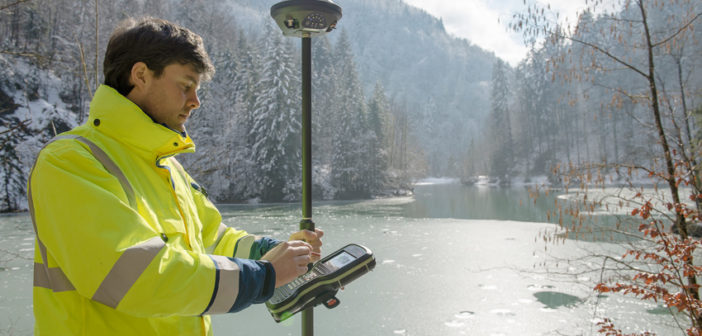High precision GNSS-RTK has merged into a proven technology since years, but there are three main challenges when working with this technology.
- Obstructions such as trees and buildings limit the field of application.
- A robust communication to a correction service is needed but cannot always be relied upon.
- Political and economic drivers influence GNSS modernization.
The high dynamics of new GNSS signals make it difficult for the user to decide which is the right equipment. With the latest generation of Viva GNSS receivers we had these three factors in mind to make the purchasing decision as simple as possible.
The first challenge is addressed by a technology called RTKplus. The growing number of signals from an ever increasing satellite constellation certainly helps in difficult environments, but demands a GNSS receiver to be smarter than ever before. RTKplus is powered by a brand new powerful 555 channel measurement engine that not only tracks more signals, but it also acquires weaker and obstructed signals more quickly. RTKplus in simple terms is like RTK, but better. It adapts to changing conditions by selecting the optimal signals to deliver the most accurate positions.
The second challenge is addressed by a technology which is called SmartLink. I am convinced that almost every user of GNSS-RTK has experienced RTK communication interruptions. If the RTK link fails or is interrupted, the accuracy quickly deteriorates from centimetre to meter. SmartLink is a technology that makes, as the name says, the communication link smarter. SmartLink decides without user interaction whether the RTK correction to the local service is available and preferred or whether the extra-terrestrial L-band service powered by Veripos could take over. The Veripos service is independent of the local service and works with cm accuracy, when no local reference data is available at all.
To find out more how SmartLink works watch these How-to videos:
How to use SmartLink:
How to use SmartLink Fill
The third challenge about the uncertainty of GNSS modernisation is addressed by the most flexible receiver design in the industry. Unfortunately GNSS modernisation is extremely confusing and difficult to follow. For example the European GNSS agency promised full operation of Galileo in 2008. In 2016, the Galileo signals have changed many times and Galileo is still in deployment phase. We cannot change the nature of these uncertainties, but we can build flexible and intelligent receivers that are able to cope with change. Leica Geosystems latest GNSS products host a powerful 555 channel measurement engine that is prepared for the next decade. The simple answer to the question: “Will your receiver be able to track all planned GNSS signals?” is “YES”.
I am happy to say that with 30 years of experience in GNSS the GS16 is the best receiver we have made to date. With its flexible design this receiver is a safe investment for the future.

Bernhard Richter. VP Geomatics at Leica Geosystems part of Hexagon.














